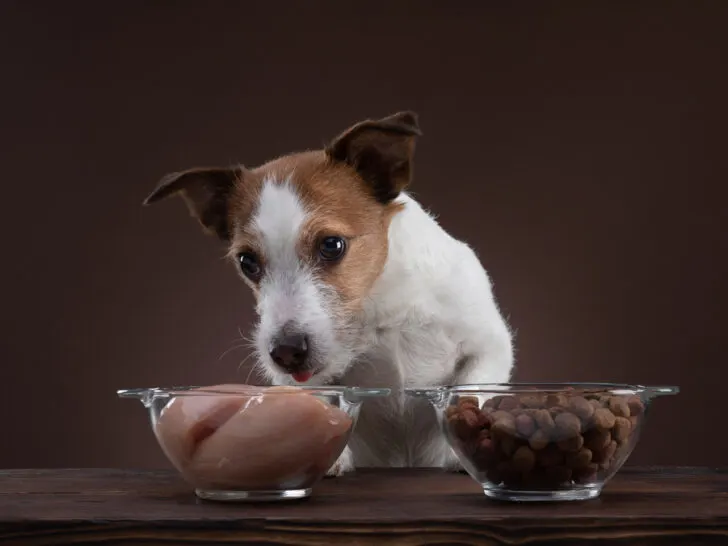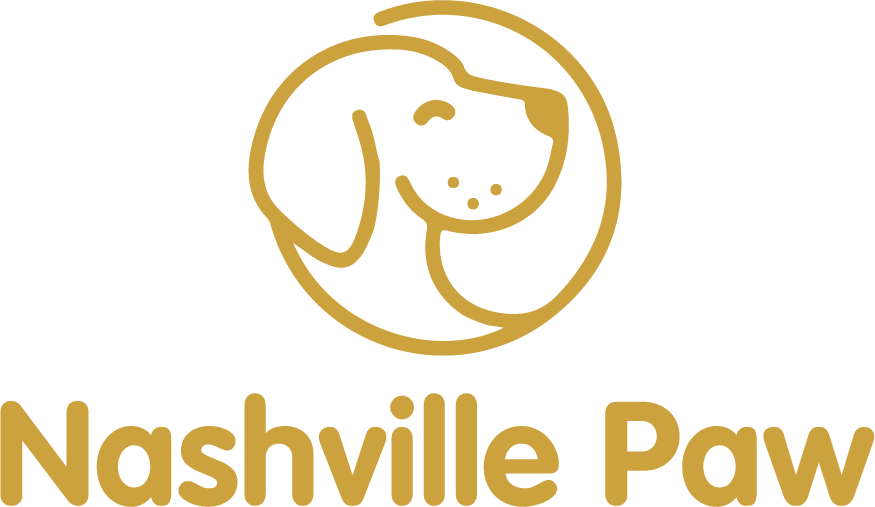The debate on raw diets has been around for a while. Chances are that it won’t go away anytime soon.
Proponents swear by it with proof of positive gains for the dog. On the other hand, opponents worry.
They caution against feeding raw foods to pets because of potential contamination.
With such a vast divide, one is left wondering what is right. In my experience, I have noticed that what you feed your pet should be based on personal preference.
I have experimented with several diets and foods in which dogs are different. However, a shift to raw diets tends to have better impacts on my dogs.

Most of the dogs have better and brighter-looking fur. They also tend to have improved health, as depicted in the vets’ reports.
However, there is a catch when it comes to raw foods. I had to investigate and research extensively to know what works.
I concluded quickly that making the food at home was not for me.
It required attention and extreme hygiene, which I wasn’t sure I could keep up with.
However, having seen how beneficial raw pet food is for my fur babies, I sought an alternative.
This led me to check out different raw pet food manufacturers.
Luckily I found a couple of these manufacturers and settled on one that supplies all my raw dog foods. I have no complaints, and it has been a few years.
What is Raw Food for Dogs?
First, you must start here to appreciate what you are giving your dogs. Raw food refers to raw meats (muscle and organ), and bones (crushed and whole).
They also include some types of vegetables and fruits safe for dogs.
This is the kind of diet dogs would naturally devour without being domesticated. This means that their digestive system is intended to accommodate such foods.
Moreover, the fresh and raw ingredients are better absorbed.
They tend to have an immediate effect.
You will notice changes in your dog after a few days.
How Does Raw Pet Food Help

I have noticed that skin brilliance is the first thing I observe once I transition my dogs to raw food. The fur on their coat shines brighter and appears healthier than usual.
They also tend to have less poop. Besides that, the poop is drier and easy to collect, unlike before when they fed on kibble.
Another distinct advantage when feeding raw is that I have fewer emergency vet trips. My dogs also seem to have fresher breath and overall good oral hygiene.
Before finally joining the raw diet proponents, I had health concerns. It was only after researching that I was confident enough to try.
Dogs’ digestive systems are incredibly resilient. They have highly concentrated acids that eliminate most, if not all, disease-causing organisms.
This means that even in the case of contamination, the dog is less likely to be affected.
Infection and diseases only happen if the dog’s immune system is compromised. Therefore, introducing healthy dogs to raw pet food is advisable.
Don’t confuse the ordinary detox phase when transitioning with the disease. I believe this is something most pet parents do and end up demonizing raw pet food.
A dog feeding on kibble/cooked food will have stomach upset when transitioning to raw food. This only lasts a few days as the system resets and gets accustomed to the new diet.
What Does a Raw Diet Consists Of

Most raw diets for dogs are made of the following ingredients:
- Organ meats
- Muscle meat
- Ground and whole bones
- Raw eggs
- Selected fruits and vegetables
- Dairy like yogurt
Note that most store-bought foods have similar ingredients. The difference is that these have been cooked or processed.
However, they also contain unnatural additives which harm the dog.
It is, therefore, better to go for raw foods as the ingredients are precise. The combination of ingredients in raw food will vary depending on the manufacturer.
Knowing how to store raw food to minimize contamination is also essential. While a dog’s digestive system can handle raw foods, there is a need to avoid contamination.
Do this by handling raw food properly.
Freeze the unused portion until when it is needed. Also, thaw the amounts in the fridge instead of using a microwave or thawing on the countertop.
Is Raw Pet Food Safe?
Contrary to most people’s fears, raw pet food is generally safe. Raw pet food is safe unless there is blatant carelessness and improper handling.
Research conducted a while ago proved that raw food is safe. It further shows how dogs feeding on raw food have a more balanced microbiome.
They also have a healthier gut function.
While no documented long-term benefits of raw diets exist, pet parents must try this on their own. It remains open for discussion until more research is done on this subject.
What are the Potential Risks?

Experts may not rule out the benefits of raw pet food for dogs, but they also have concerns about the risks. The professionals worry about things that could go wrong with raw food diets. These include:
Bacterial Infection
Raw diets for dogs tend to harbor e-coli and salmonella bacteria if mishandled. Any slight contamination is a breeding ground for this dangerous bacteria.
When the bacteria reach the dog, they could cause grave dangers. Unfortunately, they could also get to the humans around.
Cooked food has a better chance of destroying these bacteria when cooking.
Risk of Nutritional Deficiency
Vets may worry about this, especially if they are not professional formulators. Not all raw food is sufficient for your dog.
I emphasize buying properly formulated raw pet food from expert manufacturers.
Injuries from Bones
The raw bones can injure your dog when crushed into smaller pieces. Unless you give your dog whole or powdered bones, stay away from the semi-crushed ones.
In the end, your dog should be fed nutritionally balanced foods only. Experiment with what works for your dog, but don’t write off raw diets too.
People Also Ask
Do vets recommend a raw diet for dogs?
Most vets would caution you against feeding raw foods to pets. The American Veterinary Medical Association discourages this. They recommend not allowing animals fed on raw or dehydrated foods at health centers.
Is it better to feed dogs raw meat than dog food?
Since there is no proven research on raw diet gains, veterinary facilities do not support it. Improper formulation or raw diets can easily cause nutritional deficiency.
What are the benefits of a raw diet for dogs?
Some gains of raw dog diets include improved bone and skin health. Improved immunity system, reduced body odor, and reduced stool volume.
